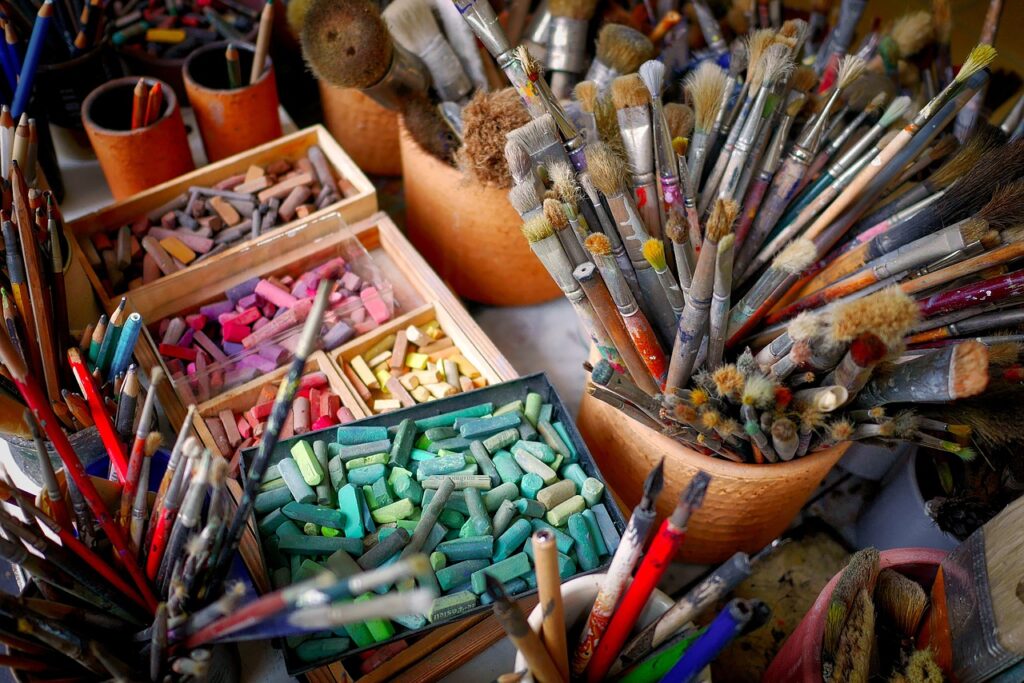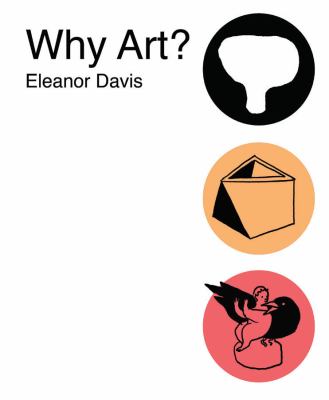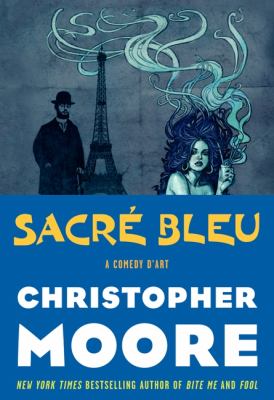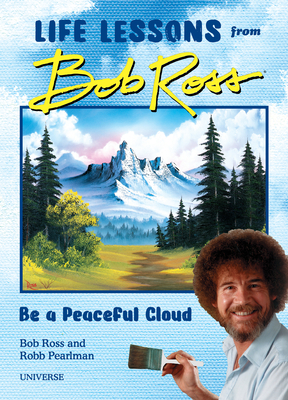Here’s a small fact about me: before I threw myself into the wide world of books, blogging, and binge reading there was one thing that had an iron grip around my off-school and off-work life: art. From the time little me could figure out how to hold a crayon with semi-proficiency I was art-ing on most things I could get my hands on (thankfully I was never a wall-drawer but unfortunately our kitchen chairs did not escape my creative eye). I spent my weekends in art classes and summers at arts camps, and when it was finally time to leave the trenches of high school, OCADU was where I went. While I don’t draw as much as I should anymore, I still enjoy dragging my friends and family to art museums and niche galleries to play my favorite game, Is It Art?, and I can still spout off random art history facts on command (which makes for an odd but sometimes useful party trick).
Now, why am I sharing all this with you? I might be a little late to the party, but it was World Art Day (on April 15th)! This UNESCO-recognized celebration aims to promote the development of art and spread it so that it can be enjoyed by everyone. Considering the recent string of post-secondary arts program cuts by “budget savvy” administrations and the concerning effects AI-generated imagery has had on art communities across the globe, I think it’s more important now than ever to highlight World Art Day and what makes this form of expression so special.
So, if you’re ready to reach into the untapped depths of your creativity or you just want to read some things about pretty pictures and the people who make them, I’m going to get on my little soapbox to hawk the good word of art, with some of my favorite artsy things you can pick up at your local VPL branch.
If we’re going to talk about art and why it’s a good thing to have, we need to start at the top with a pretty big question: why? Why do we feel compelled to pick up a pencil or a paintbrush to tell something to somebody else? We’ve done it since prehistoric times when cavemen figured out mud and clay could make lasting images on rock walls. Like the many opinions on a piece of art itself, there are many different answers to that question. Some experts say that art was an evolutionary mechanism used to choose a mate. Some believe that as art is a meaning-making vehicle, it’s a key way we understand ourselves and those around us. Some say it’s a practice in empathy for those who create it and view it. Art might even be a way for us to process negative situations in a way that’s far enough removed to be helpful and not a hindrance to our mental well-being. That’s a lot of heavy lifting for something you just enjoy with your eyes! But if you’d like to explore more of the “whys” behind art, why not check out the aptly named Why Art? by Eleanor Davis? It’s a breezy, sit-down-in-a-museum-café read that explores a wide range of art and artistic intent while also being self-reflexive in the way that art sometimes gets when you think about it for too long. At least you’ll look very cultured and intellectual while sipping a latte and flipping through the artsy black-and-white illustrations.
If you were to bring me to any art gallery or museum though, there would be one place I’d make a beeline to and would probably take up several hours of your time talking your ear off about what was there. I’m talking about Impressionism and from a completely biased opinion, it’s the coolest, for reasons that are tough to fit into one blog post. Like I said, I have hours’ worth of rant-worthy talking points, but I’ll do my best to sum up the important bits in a few sentences. Impressionism is an art movement that took up a large portion of the late 19th century, with such giants as Claude Monet, Edgar Degas, and Pierre Auguste Renoir leading the charge. It has drama, a unique mastery of color, a drive to capture movement to canvas, and a complete disregard for the rules that set the stage for what modern art is today. So, when Sacre Bleu by Christopher Moore fell into my lap several years into my university studies, I devoured it with the same ferocity my readings probably deserved but never got. It’s funny, provocative, and just a little bit raunchy, like good art often is. Sacre Bleu is a fictionalized version of events following the mysterious suicide of Vincent Van Gogh. Lucien Lessard and his charismatic wingman, silver-tongued Henri Toulouse-Lautrec are on the case after news reaches them of their friend’s demise, and an odd little colorman who seems too strange to just be a coincidence. Along the way we meet the champions of the Impressionist period, delve into the origins of inspiration, and maybe even find love (in a weird, twisted sort of way), all centered around the magical properties of a mysterious shade of “sacred” blue. Moore starts his author’s notes apologizing (in his signature tongue-in-cheek way) for ruining art as we know it, but as I, the chronic re-reading avoider, is picking this book up for the third time, I don’t think he messed up too badly.
Speaking of art and magic (and AI in the art realm while we’re at it), there’s nothing that comes to mind faster than Hayao Miyazaki. My little soapbox is about to get just a bit taller. Miyazaki’s stories and hand-painted animations are probably why Little Me got the idea in her head to become an artist in the first place. While my heart will forever belong to Spirited Away, there’s one movie that hits me even more now that I’m older, wiser, and have the grueling experience that only a degree and a diploma can gift you.
Kiki’s Delivery Service is a simple story about a young witch who sets off on her own to discover the world and who she is so she can become a fully-fledged sorceress, along with her ever-sassy black cat companion, Jiji. Things seem to be going exactly according to plan for her until she’s thrown off her metaphorical broom when she’s confronted with Responsibility and Adulthood. I had always thought this movie was a fun slice-of-life flick, but when I returned to it as a very tired university student, I realized that what Miyazaki had crafted was a beautiful story about creative burnout and the uncertainty of inspiration (and life too). Ursula, the artist, armed with paintbrushes, an eye for aesthetics, and deeply sage advice really ties everything together, but I won’t spoil how. You’ll just have to watch the movie to see for yourselves! Unless you’ve already seen it, in which case, if you know, you know.
Still, if the magical world of Kiki’s Delivery Service feels a little out of place to you on this list, how about a story about an artist that’s fully grounded in reality? So grounded that reading it managed to dredge up the stress I left behind in old class assignments. Blue Period begins in the shoes of Yatora, a high schooler who seems perfect on the outside. He’s got good grades and popularity in spades but he’s missing something and the thing he’s missing eats at him, filling his life with a dullness he can’t shake. That is until he accidentally stumbles into his school’s art room and comes across a painting that changes his whole trajectory in life. Yatora decides he wants to become an artist but the only way to do that is to gain admission into Japan’s most prestigious and only fine arts university. Starting from nothing is scary, especially when he’s surrounded by talent who have been drawing, painting, and creating since they were young. But Yatora has a passion and determination to fuel his way forward that no one else around him can match. What Blue Period does best, maybe better than most artist-focused stories out there, is that it does away with the romance of making art. Instead, it’s an introspective character story and a deeply personal look at the hard work that goes into it. And who better to tell that story than a former student of the very university our main character has their eyes set on, too? The self-doubt, long nights, and intense effort that art is almost impossible to create without is made so visceral for it, in a way that’s as uncomfortable (though good art often is too) as it is comforting and motivating.
I can’t finish off this post without mentioning one more person: Bob Ross. If you aren’t familiar with this giant of 80’s television or his library of soothing painting tutorials, let me introduce you to his calm, peaceful corner of pop culture where every mistake is a “happy little accident” and the only bad thing you can do in art is to not try (or put the effort in) at all. We have an endless variety of Bob Ross books, from self-help and life guides to cookbooks, picture books, and of course, more painting tutorials. It would take a whole other blog post to talk about each one, so I’ll let you scroll on your own time and leave you here, though I have way more recommendations to share and not enough words to do it in.
So, though World Art Day is past us, it’s never a bad time to make Bob Ross proud. Go pick up a pencil, a crayon, a paintbrush, or even a drawing tablet, and have fun! Doodle, experiment, make things that are even bad art! There’s no wrong way to express yourself, but the most important thing is to start- and to try. Until next time!





